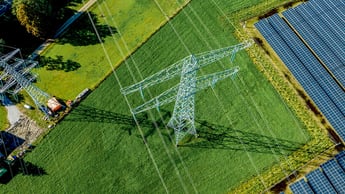AWS Fargate and Itility Data Foundation at the heart of AI-powered software for precision fertilization
Supporting sustainability
Colombian sugarcane mills are large. On average, they oversee more than 5,000 fields spread across 25,000 hectares. This enormous amount of land is impossible to monitor and fertilize efficiently without the support of a smart solution.
Farmers need to maximize growth with the least amount of fertilizer. To achieve this, they need to identify specific areas in the fields where growth is lacking, and additional fertilization is needed. Excessive use of fertilizer is costly and harms the environment, while too little fertilization reduces yield. Therefore, it is paramount for sugar cane mills to precisely determine where to apply fertilizer – a practice known as “precision fertilization”.
Our partner eLEAF provides satellite-based data to customers such as sugar cane mills to optimize agricultural production through an application called Fieldlook, which uses machine learning to proactively advise farmers. We developed a loosely coupled system using AWS components and our Data Foundation framework to support eLEAF in their mission to enable precision fertilization.
At the core of technology
Central to our architecture is a service API, which creates a loosely coupled system. This design ensures a flexible and scalable IT environment as components can be renewed or exchanged without impact to the whole architecture.
eLEAF customers access Fieldlook through a UI built with vue.js, known for its benefit of less repetitive coding. Requests are processed via Fast-API for high performance, with #Pydantic ensuring data quality (especially helpful as Python sometimes can produce ‘hallucinating’ results).
It is not always possible to predict when farmers will use Fieldlook, but when they do, a lot of IT-resources are needed. The autoscaling capability of AWS Fargate combined with our Data Factory building blocks enables efficient processing of petabytes of data.
An AWS Application Load Balancer is used to apply the most cost-effective resources without negatively impacting scalability and performance. Also, it increases security by preventing direct access to the Fargate environment and the Data Factory.
The data necessary to perform the farmer’s request is stored separately in S3 and managed with an Aurora database running on PostgreSQL. A Dagster infrastructure then allows for large-scale, complex calculations to provide the necessary insights on crop growth and fertilization optimization.
Impact
Fieldlook enables precision fertilization, helping mills achieve optimal yield without excessive use of fertilizer.
The insights provided assist sugarcane mills to redirect fertilizer from areas already showing optimal growth to those lacking growth – resulting in a 6% to 14% productivity increase per hectare without extra use of fertilizer. Given an average yield of 100 tons/ha (valued at €3,500), this translates to an additional revenue and margin of €200 to €500 per hectare.
Imagine how this seemingly small profit increase could add up for a sugarcane mill operating on 25,000 hectares.






